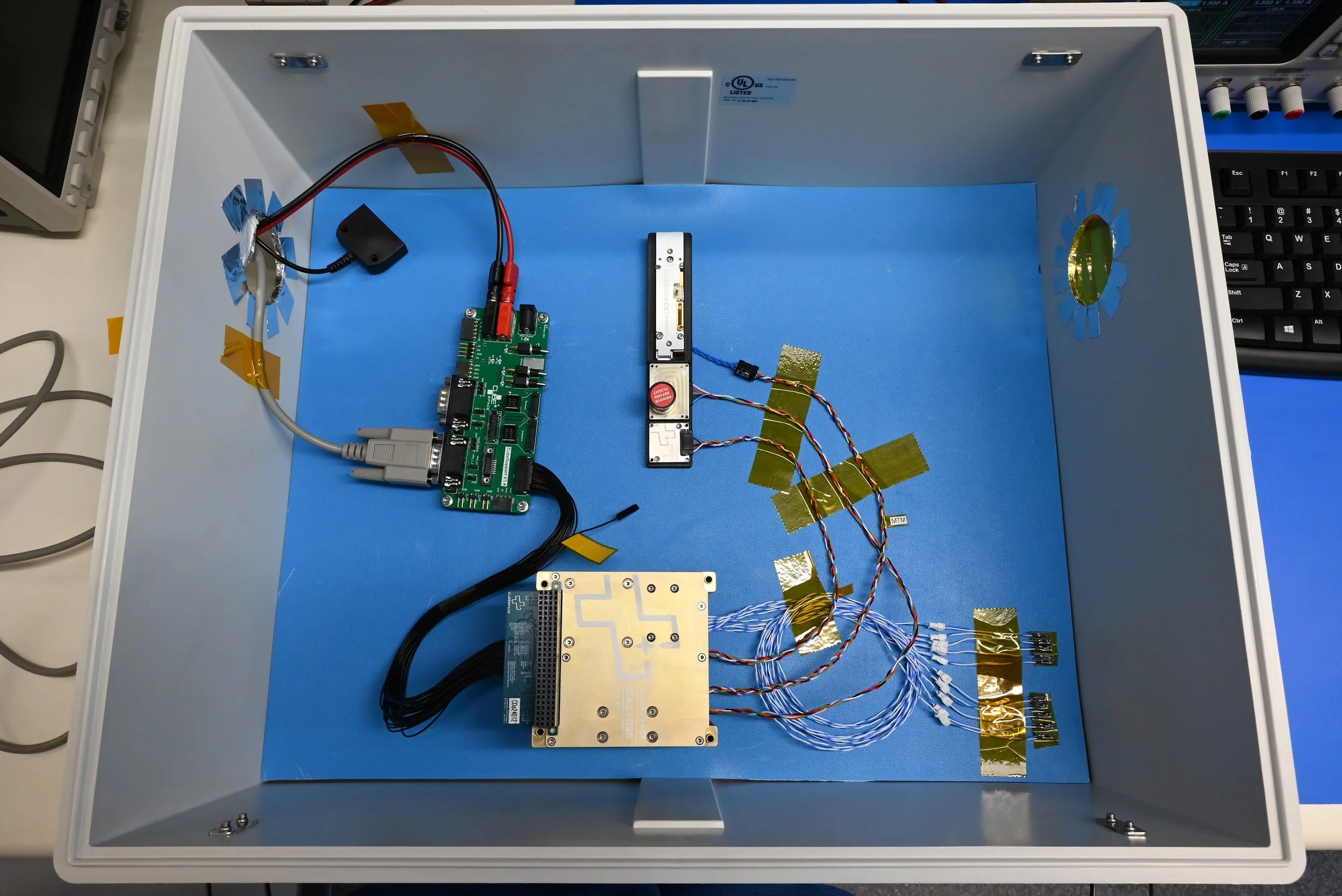Attitude Determination and Control System
Apr 4, 2024
Author: Tristan Tarnowski
The flight hardware for Skya’anaSat continues to roll in. This time, we have the Attitude Determination and Control System (ADCS) - this is the system that allows the spacecraft to detect and control its orientation, or attitude, so that it is pointing where we want.
Attitude control is very important and has a direct impact on many aspects of the spacecraft mission. The solar panels need to be pointing towards the sun, the antennas need to have an orientation that allows communication with the ground station, and the camera needs to be pointing at Earth so Skya’ana can capture images and video.
The attitude determination and control hardware can be split into two main categories: the sensors and the actuators. The sensors are used for the “attitude determination” portion. For Skya’ana, the main sensors are a 3-axis magnetometer which measures the Earth’s magnetic field, and a sun sensor - a camera which detects the position of the sun. We also have angular rate sensors, which can tell the spacecraft how fast it is spinning.
Main ADCS sensors - the magnetometer and the fine sun sensor
The data from all of these sensors is fused together to provide an accurate reading of how the spacecraft is oriented with respect to Earth. Once that information has been obtained, the ADCS can then make corrections automatically to ensure Skya’ana is pointing in the correct direction. Skya’ana has two kinds of actuators that it can use to perform these corrections - reaction wheels and magnetic torquers. Both of these kinds of actuators use electrical energy from the spacecraft’s solar panels to produce torques that can rotate the entire spacecraft.
A reaction wheel uses an electric motor to spin a flywheel up and down. When the flywheel is accelerated in one direction, the rest of the spacecraft will accelerate in the opposite direction due to conservation of angular momentum.
A magnetic torquer, or magnetorquer, is an electromagnet formed by wrapping wire around a ferromagnetic core. When power is applied to the wire, it generates a magnetic field which interacts with the Earth’s magnetic field and produces a torque to rotate the spacecraft.
ADCS core, containing the reaction wheels and magnetorquers
The ADCS was purchased from the South African company CubeSpace, who assembled it in their facilities in Stellenbosch, South Africa. After traveling nearly halfway around the world, the ADCS arrived in the CfAR lab at the end of March. The first step was to unbox and inspect all of the components, then test them to make sure everything was working properly. We are happy to say that all of the tests passed, and that the ADCS is ready to be integrated with the rest of the satellite’s subsystems in the near future.
Inspecting and photographing the ADCS components
ADCS set up and ready for testing




